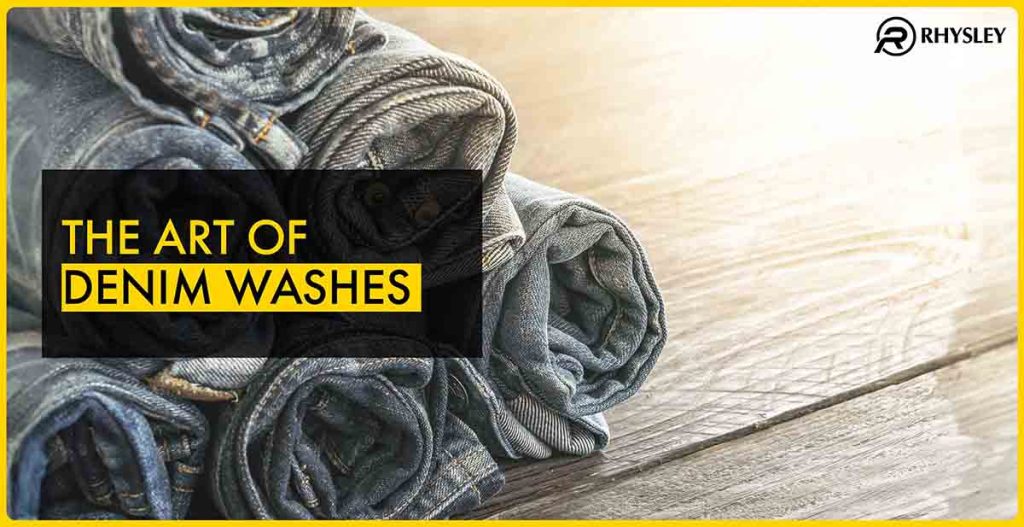
The Art of Denim Washes: Exploring the Different Types
Ever wondered how your favorite pair of jeans gets its unique color and look? Welcome to the fascinating world of denim washing – an art that transforms the appearance and feel of a raw denim fabric into something stylish and magical.
It is a process that is marked by a delicate balance of creativity, craftsmanship, and science. From the classic indigo blue of raw denim to the unique faded patterns; the world of denim washes is vast and diverse.
In this blog post, we’ll explore the various types of denim washes and how they contribute to the overall style of jeans and denim garments.
Understanding Denim Washes
Denim washing is a technique that changes the fabric’s texture, color, and appearance altogether and lends it a personalized touch. Denim washes add unique visual elements to jeans while also enhancing the natural characteristics of denim fabric such as durability. The washing process involves the use of water, chemicals, and various techniques that alter the fabric in multiple ways. A denim company always uses a variety of washing processes to achieve different looks for every pair.
Types of denim washes
Raw Denim
As the name suggests, raw denim, also known as unwashed denim, is the purest form of denim. It retains its original indigo color and stiffness. Raw wash jeans are mostly popular among denim purists who appreciate natural fading of jeans over time.
Enzyme Wash
This washing technique would remind you of chemistry classes. Remember that enzyme is a protein that is obtained from fungi and bacteria? Well, in enzyme washing, enzymes work on cellulose that is found in denim. After all, denim is crafted out of cotton fabric that is made of cellulose. It lends the jeans a faded look without damaging the environment.
Some of the most common enzymes that are used in the denim industry are cellulases, proteases, alpha-amylases, and catalases. As compared to other denim washes; enzyme wash is considered to a more eco-friendly alternative as enzymes are biodegradable.
Stone Wash
Stone washing involves washing denim fabric with pumice stones in order to create a faded, worn-out look. It softens the fabric and lends it a slightly bleached appearance. The sand from the pumice stones can get into the jeans’ pockets and often need to be physically removed. This technique requires denim to
Acid Wash
Acid wash jeans were extremely popular in the ’80s and ‘90s and in the recent years they have made a huge comeback. This technique uses a mix of bleach and chemicals to achieve a dramatic, vintage effect that was highly popular in the ’80s. Some denim companies also use pumice stones pre-soaked in bleach solution in manufacturing acid wash jeans. This helps soften the fabric and achieve splotchy patterns and non-uniform color.
Bleach Wash
As the name suggests, this process uses strong oxidizing agents (bleach) to lighten the fabric. The oxidizing agents could vary from potassium permanganate, sodium hypochlorite, hydrogen peroxide, to calcium hypochlorite. The chemical to be used depends upon the desired effect that needs to be produced. This wash is a tedious process that can create a wide range of effects ranging from subtly faded, heavily faded, to bold all-over lightening effect.
It is also a tedious technique as all the chemicals should be completely removed from the fabric to avoid any bad smell or skin irritation. However, the versatility of bleach wash makes it a favorite among denim companies for creating a unique, one-of-a-kind jeans.
Rinse Wash
Rinse wash (also called as mill wash) is the simplest kind of denim washes. It is exactly what it sounds like. In this process, a quick rinse of water simple removes the excess indigo dye and any impurities out of the fabric. This denim wash is used to produce the darkest shades of jeans. The end result is a dark colored jeans that still has some of the rigidity of raw denim.
Out of all the denim washes, rinse wash uses the least amount of water. Besides, it helps sustain as much dark color as possible. A rinse washes jeans looks great in both casual and polished settings.
Whiskering
Have you ever noticed horizontal lines across the jeans? Well, that’s the result of whiskering. It is a surface treatment that produces thin, faded lines (whiskers) across jeans that almost look like creases and gives the appearance of a worn-out denim. Whiskering is mostly done by hand using abrasive rods to create these lines. These lines are created around areas that are known to naturally crease and fade over time such as across the thighs and back of the knees.
Hand Sanding/Sandblasting
Sand wash can be done with a sandblaster or by hand using sandpaper. In sand wash, denim is sprayed with huge amounts of sand in order to create a faded, worn look. The result is a light-colored denim with a vintage appeal.
Hand sanding is a manual process that involves distressing the jeans with sandpaper in order to create a faded, washed-out look. Hand sanding is generally done on specific areas of the jeans, for instance, around the pocket and knee areas. This process doesn’t use water and is typically executed before washing to give the denim a worn-out look.
Leading Denim Exporter for All Your Denim Needs
Denim washes dramatically transform the complete look and feel of jeans. As a leading denim garment manufacturer and denim exporter, we specialize in producing high quality denim jeans for men and women. Whether you prefer the raw appeal of unwashed denim or the stone washed look, we have a skilled team to create jeans in all kinds of denim washes. We have state-of-the art manufacturing facilities, denim washing teams, and experienced designers to develop denim jeans in a wide range of styles, designs, and washes. Whether you are a start-up, a trading company, or a retailer; we can fulfill your requirements and order quantities, be it small batched or bulk orders.